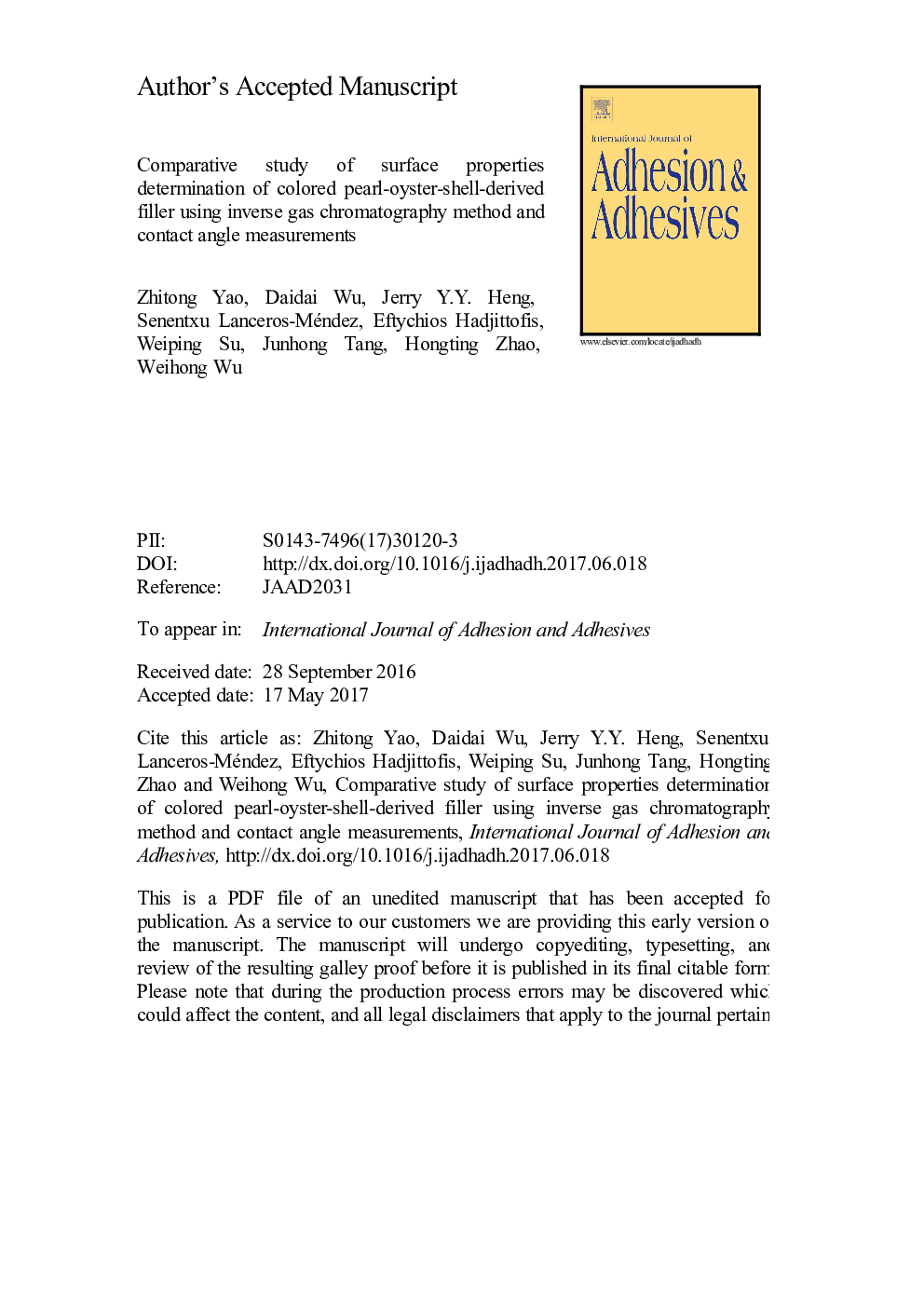| Article ID | Journal | Published Year | Pages | File Type |
|---|---|---|---|---|
| 5014764 | International Journal of Adhesion and Adhesives | 2017 | 18 Pages |
Abstract
Mollusk shells, such as clam, mussel, oyster and pearl oyster shells, are potential candidates for commercial calcium carbonate-based fillers. In this work, the surface properties of colored pearl-oyster-shell-derived filler (CMF) were investigated with comparison to those of pearl oyster shell powder (MSP), using an inverse gas chromatography (IGC) method and contact angle measurements. A developed computational model for the interpretation of surface free energy heterogeneity distributions was applied to both samples. The contact angle measurements revealed an amphiphilic nature. The dispersion component of surface free energy for both samples calculated using the Owens-Wendt-Kaelble (OWK), van Oss-Chaudhury-Good (vOCG) and Wu methods were consistent with those determined using the IGC method. The deconvolution of surface energetic sites confirmed their energetic heterogeneity. The CMF displayed lower work of cohesion, which could be beneficial to the fabrication of polymer composites, as typically reduced filler particle-particle interactions would result.
Related Topics
Physical Sciences and Engineering
Engineering
Mechanical Engineering
Authors
Zhitong Yao, Daidai Wu, Jerry Y.Y. Heng, Senentxu Lanceros-Méndez, Eftychios Hadjittofis, Weiping Su, Junhong Tang, Hongting Zhao, Weihong Wu,
